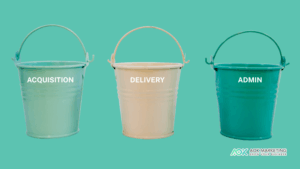What Makes a Business Easier or Harder to Sell Services To?
Quick Recap
- Business size affects decision speed and budget.
- Type of solution affects how easy it is to understand and buy.
- Belief in outcome depends on proof and guarantees.
- Client effort affects adoption ease.
- Perceived risk affects willingness to invest.
How does business size affect selling?
Business size influences budget size and approval speed.
Large companies have larger budgets.
Large companies also require longer approvals and multiple stakeholders.
Small businesses have smaller budgets.
Small businesses make decisions faster because fewer people are involved.
We sold SEO to Britannica, a large enterprise, with long approval processes and thorough ROI analysis.
We sold marketing services to Home Painters Toronto, a small local business, with high conversion rates and fast results.
What types of solutions are easier to sell?
Services that solve clear, urgent problems sell faster.
Services that need educational change require more nurturing.
GS1 US saw a 33.49% increase in transactions after we reframed barcode services for ecommerce clarity.
PacketLabs sells penetration testing. It is complex and trust-driven. Clients pay a $5,500 cost per acquisition because it addresses mission-critical security needs.
Why does belief in outcome matter?
Clients buy when they believe the outcome is achievable.
Case studies, metrics, and guarantees build confidence.
DND Finance used targeted landing pages to drop cost per acquisition to $1.60.
Ron White Shoes achieved $322,900 in revenue from a $15,050 ad spend.
How does client effort impact sales?
The less effort a client must exert, the easier the sale.
Turnkey services require minimal client input.
ASI Central provided fully managed SEO/PPC. Over 500 partners adopted it quickly.
Agility CMS required client collaboration. This slowed both sales and implementation.
How does perceived risk change the decision?
Clients hesitate when risk is high.
Lower-risk options increase willingness to buy.
Strategyzer used retargeting to generate $81,000 from a $4,500 ad spend by focusing on warm prospects.
Merriam-Webster paid around 1.2 cents per click and scaled because risk was low and ROI was trackable.
What framework helps qualify prospects?
Use these five qualification questions:
- How large is the business and how fast can it decide?
- Does the solution solve an urgent problem?
- Do I have proof that shows results?
- How much effort will the client need to make?
- How can I reduce their perceived risk?
Score each prospect. Focus on prospects that meet more of these criteria. Tailor your offer accordingly.
What are the advantages and disadvantages?
| Factor | Pros | Cons |
|---|---|---|
| Business size | Big budgets | Slow decisions |
| Solution type | Urgent need | Requires education |
| Outcome belief | High trust | Needs proof |
| Client effort | Fast adoption | DIY friction |
| Perceived risk | Low-risk buys | High-risk fears |
Frequently Asked Questions
Does small business size always guarantee fast sales?
No. Small businesses decide quickly but often face budget limits. Large businesses decide slowly but have more resources.
Can complex solutions still sell fast?
Yes. Use clear proof and trust-building methods to accelerate complex sales.
What reduces perceived client risk?
Use low-risk pilots, guarantees, and metrics to show measurable value quickly.
Glossary
- Cost per Acquisition
- The cost to acquire one client.
- Conversion Rate
- The ratio of conversions to total visitors.
- Retargeting
- Ads shown to users who previously engaged with your brand.
About The Author
Dave Burnett
I help people make more money online.
Over the years I’ve had lots of fun working with thousands of brands and helping them distribute millions of promotional products and implement multinational rewards and incentive programs.
Now I’m helping great marketers turn their products and services into sustainable online businesses.
How can I help you?





